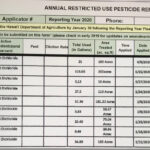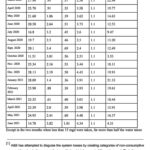Big water news on our otherwise drought-stricken island. East Maui Irrigation (EMI), currently co-owned by Mahi Pono and Alexander & Baldwin, this week released the final version of its proposal to obtain a 30-year water lease on state-owned land in East Maui to irrigate Mahi Pono’s agricultural fields. EMI’s Final Environmental Impact Statement (FEIS) dropped Tuesday, and I mean dropped. Formally titled: “Proposed Lease (Water Lease) for the Nahiku, Ke’anae, Honomanu and Huelo License Areas,” the five-volume tome runs a gargantuan 9,681 pages, up enormously since the 2,700-page Draft Environmental Impact Assessment (DEIS) was initially filed two years ago.
This is a good news/bad news situation. The good news is that finally, finally, after years of diverting East Maui water through a long series of one-year temporary (revocable) permits, A&B tackled the formidable regulatory process required by the state Department of Land and Natural Resources (DLNR) to, more or less, justify taking immense quantities of East Maui’s most precious resource for the next 30 years. (And for readers who just want to cut to the chase, EMI now wants to divert 92.32 million gallons of water a day [mgd]; it took an average of 160 mgd during the sugarcane era. Here’s more from the Maui News) The formal process requires the applicants to address an enormous laundry list of issues: economic, cultural, environmental, geographic, biologic, historic, climatic—and I’m barely getting started here—in addition to answering every single one of the hundreds of questions filed by the public in response to the initial draft document back in September, 2019.
A&B/Mahi Pono’s answers are all contained in this new FEIS, along with countless revisions, additions and new charts, maps and appendices. The bad news? The public has only 15 days to digest this 9,681-page monster and offer new comments before the Board of Land and Natural Resources (BLNR) votes on whether to accept the proposal.
Who’s going to have the time? No one I’ve contacted so far has done more than slightly scratch the surface, if that. All their responses were pretty much the same: “I really can’t comment until I’ve had a chance to study this.”
Basically, someone wanting to review the entire proposal during the 15-day period would need to read 35 pages an hour, 24 hours a day, and then, sometime in between, prepare and send additional comments and questions to the BLNR in time for its meeting. And if you’re just starting now, better up that page count.
“We’ve been waiting 15 years for this EIS,” Maui Tomorrow Foundation president Michael Williams said earlier this week. “Now we get 15 days to review it.”
I called the BLNR to ask whether that agenda item might be postponed, given the massiveness of the material to be reviewed (not to mention that it involves Maui’s largest water diversion by a private company and its biggest and still relatively untested landowner). By law, the BLNR has 30 days to make its decision on whether to accept the FEIS, but seasoned BLNR observers say that it’s likely the board wants to get started sooner in case the matter spills over into another meeting. The official response from a BLNR spokesman: It “does not comment on pending Board decisions,” even if the question only involved a scheduling matter. If the BLNR votes to accept the FEIS, those objecting will have to challenge the decision in court.
When EMI released its significantly shorter 2,700-page DEIS in 2019, those wishing to respond complained bitterly that they only had 30 days to read, digest and send in their comments. Despite the time constraint, some 400 letters were sent, containing many hundreds of questions and comments. There were many criticisms. In its 2019 response, the Sierra Club called the DEIS “deficient,” saying it relied upon “large and misleading assumptions,” and “did not incorporate known information about the natural and cultural resources of the area.”
EMI’s responses to these 400 letters in Volume Four of the FEIS seem particularly meaty. That volume alone encompasses 3,626 pages and my very brief scan found it full of intriguing information. Staff at the Honolulu-based engineering firm Wilson-Okamoto, hired by A&B to prepare all versions of the EIS, faced such diverse questions as whether or not Mahi Pono fencing might harm the endangered Hawaiian hoary bat (maybe), whether employment projections (close to 1,000 workers by 2030) included additional bathroom facilities (answer: Porta Potties) and whether it was wise to pour East Maui water into fields owned by a new and untested company like Mahi Pono (“speculative” and irrelevant).
Getting a 30-year water lease has been at the heart of Mahi Pono’s existence ever since its Canadian parent company, the Public Sector Pension Investment Board, paid Alexander & Baldwin $267 million in December, 2018, for 41,000 acres of former sugarcane land and 16,000 acres owned by EMI, making it Maui’s largest landowner. As part of its EMI deal, A&B has to help Mahi Pono obtain a permanent water lease, or return as much as $62 million of the purchase price.
When A&B’s revocable permit option was, well, revoked by the state legislature in 2019, the issue came before the BLNR in 2020, which reinstated the permits. In June, in a related case about A&B’s revocable permits, a judge’s decision again looked to extinguish them. After several unmet promises by Mahi Pono over the past two years that the FEIS was coming any day, it’s interesting that it abruptly released its FEIS with EMI facing the termination of its temporary water use permit.
If you want to weigh in on the FEIS, testimony to the BLNR can be emailed (blnr.testimony@hawaii.gov), mailed (Department of Land and Natural Resources, Attn: Board Members, 1151 Punchbowl St., Rm. 130, Honolulu, HI 96913), or faxed (Attn: Board Members (808) 587-0390).
Coming soon: We Get Letters: A Look Inside Volume Four.



Pingback: Citing "Unconstitutional Status Quo," Judge Sharply Curtails East Maui Water Diversion
Pingback: "Production Errors," Typos Cause Temporary Withdrawal of A&B/Mahi Pono Final Environmental Impact Statement